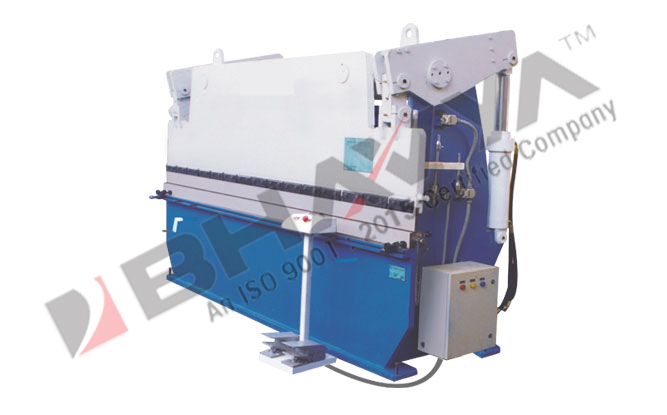Hydraulic presses are used in different industries. These include automotive, power generation, oil & gas, chemicals, textile, and paper production, as well as other manufacturing processes. Their design is based on the principle of reciprocity. This means that when two piston assemblies push against each other, the press that acts on them experiences a pushing force equal to the force of the individual pistons.
Working Principle of Hydraulic Press Brake System
They work by using two cylinders. One cylinder rotates a shaft while the other one pushes a fixed disk, which is rotatable. To provide power, a motor supplies the rotational force and a Servo-voltage provides the electrical current to it.
Advantages of Hydraulic Press Brake System
The hydraulic press brakes have several advantages. They include a high rate of speed and low drag. They can handle almost any application. They can withstand heavy loads and provide high pressure. They are widely used in a wide variety of industries and they are being progressively replaced by CNC machines in various sectors including the aircraft industry.
Hydraulic press brakes can be classified in two ways: direct and indirect. Indirect ones exert pressure through a rotary or linear motion and can be operated either automatically or manually. They are available in a wide variety of styles to suit different purposes. These include Rotary drum, roller, and centrifugal brake machines. They are used for several tasks like loading and unloading, lifting, measuring, painting, stripping, piercing, etc.
In general, the larger the tonnage of your equipment, the higher the pressure generated out of them. It is due to this reason that smaller and compact medium-sized hydraulic press brakes are available in the market. They are very convenient as compared to the electric press brakes which are difficult to mount and are difficult to maintain. However, with the advancement of technology, you can use lightweight hydraulic brakes which are comparatively more powerful. They help you to lift and lower tonnage more effectively.

Hydraulic presses brakes the materials being moved or lifted and are known for their reliability and durability. They are available in a variety of sizes. Smaller ones are suitable for lighter and thin materials whereas large ones are required for materials that are thick and could go a considerable distance. Hydraulic machine tools use an electric motor and apply constant pressure onto the materials being moved thereby exerting a pressure that is ideal for use in manufacturing. With the progress in technology, new and advanced hydraulic machine tools have been developed and are readily available in the market to help you work with ease and reduce stress levels.
Different types of Hydraulic Press Brake System
There are various types of hydraulic presses available depending upon their uses. Hydraulic presses brake materials either by exerting a vacuum or by employing a drum brake mechanism. These are available in different sizes and power levels. Smaller ones are suited for smaller operations where maximum tensile strength is required whereas larger ones are suitable for higher tensile strength applications. There are also specialized servo-electric presses used for high-speed detailing applications where high pressure is needed.
Material Used In Making Hydraulic Press Brake System
Hydraulic press brakes are made from different materials depending upon their usage and environment. Steel, aluminium, cast iron, and bronze hydraulic brake components are used when heavy-duty press brakes are required. Cast iron and bronze hydraulic pistons are available in a variety of sizes and are best suited for all kinds of press brakes.
In addition to the above, several hydraulic pumps are available for Hydraulic Press Brake application. Commonly used hydraulic pumps are rotary screw pumps, screw pumps, rotary vane pumps, and rotary valve pumps. Hydraulic fluid enters the system via an air inlet valve and is directed towards a drain through a bail hose. The entire system and components are enclosed within a pump housing to prevent the unwanted flow of fluids.
Press Brake Machines – How Do They Work?
Press brake machines do not just do the simple closing, but rather apply force to brakes with the use of a hammering action rather than removing lugs from the discs. So, press brakes are classified into four classes, basic press brake, hydraulic press brake, roller rocker press brake, and hammer drill press brake. Hydraulic is typically used more in industrial applications. Rocker press brake is characterized by the presence of a large drum with a piston at its end. The piston moves back and forth on the drum, effectively applying pressure to the disc.
Forging machines use an inbuilt force produced by a variable-frequency oscillator to apply continuously, reliable friction-free pulling or binding force to the discs. This method has many advantages over press brake machines because it is not affected by thermal variations, whereas modern machines tend to run more slowly due to thermal variations.





